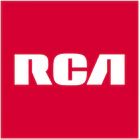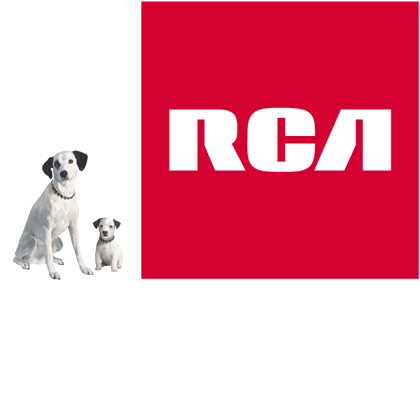
Legacy
Did you know...
...that RCA was part of the Apollo Project? NASA awarded contracts to RCA Astro Electronics Division, to develop:
- the B&W, special slow-scan, television Vidicon RCA cameras for the Command Module of Apollo 7 and 8 missions,
- and RCA Color camera (J-series) with Field Sequential Color System Ground-Commanded Television Assembly (GCTA), for lunar surface operations of Apollo missions 15,16, and 17.

1964: the RCA Vidicon cameras and the Ranger 7 lunar surface probe satellite
In 1964, the Ranger 7 was successfully launched. RCA was an important subcontractor on the Ranger lunar probes, developing the cameras that would transmit high-resolution photographs of the lunar surface.
On July 31, 1964 Ranger 7 took the first pictures at close range of the Moon. These pictures were made by 6 RCA television Vidicon Cameras (2 full-scan cameras and 4 partial-scan cameras).
The Ranger program was a series of nine unmanned space missions by the United States in the 1960s, between 1961 and 1965, whose objective was to obtain the first close-up images of the surface of the Moon: large-scale topographic information needed for the preparation of the Surveyor and Apollo projects.
The Ranger spacecraft were designed to take high-resolution images of the lunar surface, transmitting those images to Earth until the spacecraft were destroyed upon impact.
Ranger 7 was the first US space probe to successfully transmit close images of the lunar surface back to Earth and the first successful flight of the Ranger program. Ranger 7 reached the Moon on July 31, 1964.
1968-1971- 1972: RCA High-resolution cameras selected by the Apollo lunar landing space program
RCA Cameras were selected and used successfully by the NASA for several missions of the United States‘ Apollo space program:
1. Model RCA Vidicon type B & W SSTV (Slow-Scan Television System) for flights :
- APOLLO 7 (October 1968) and
- APOLLO 8 (December 1968)
The camera historical development:
NASA decided on initial specifications for TV on the Apollo command module (CM) in 1962.
RCA was given the contract to manufacture such a camera. It was understood at the time that motion fidelity from such a Slow-Scan Television System (SSTV) would be less than standard commercial television systems, but deemed sufficient considering that astronauts would not be moving quickly in orbit, or even on the Lunar surface.
NASA selected a scan converter manufactured by RCA to convert the black-and-white SSTV signals from the Apollo 7, 8, 9, and 11 missions.
Operational history: Apollo 7 and Apollo 8 used an RCA slow-scan, black-and-white camera.
On Apollo 7, the RCA camera could be fitted with either a wide angle 160 degree lens, or a telephoto lens with a 9 degree angle of view. The RCA camera did not have a viewfinder or a monitor, so astronauts needed help from Mission Control when aiming the camera in telephoto mode.
Specifications: The RCA camera used interchangeable lenses, including a wide-angle lens with a 160 degree field-of-view, and a 100 mm telephoto lens.
(NASA photo: Earth seen during the Apollo 8 live TV transmission on 23 December 1968 using the 100 mm telephoto lens on the RCA command module TV camera)


2. New Model RCA J-series of Field Sequential Color System type GCTA (Ground-Commanded Television Assembly) for flights:
- APOLLO 15 (July -August 1971),
- APOLLO 16 (April 1972) and
- APOLLO 17 (December 1972)
After Apollo 12, a new contract was awarded to the RCA Astro Electronics facility in East Windsor, New Jersey for the lunar surface operations of Apollo missions 15,16, and 17.
The RCA system used a new, more sensitive and durable TV camera tube. The improved image quality was obvious to the public with the RCA camera's better tonal detail in the midrange, and the lack of the blooming that was apparent in the previous missions.
The system was composed of the RCA color television camera (CTV) and the television control unit (TCU). These were connected to the lunar communications relay unit (LCRU) when mounted on the Lunar Roving Vehicle (LRV). It used the field-sequential color system, and ground-station signal processing and color decoding techniques to produce a broadcast NTSC color video signal.
On Apollo 15, the RCA camera produced live images from the Lunar Module's Modularized Equipment Stowage Assembly (MESA), just as the previous missions did. This RCA camera was repositioned from the MESA onto a tripod, where it photographed the Lunar Rover Vehicle (LRV) being deployed. Once the LRV was fully deployed, the RCA camera was mounted there and controlled by commands from the ground to tilt, pan, and zoom in and out.
Apollo 15 was thus the last mission to have live video of the mission's first steps via the MESA, as on the following flights it was stowed with the LRV.
(source: Wikipedia : “Apollo TV camera”)
1969: A Look at the Apollo Space Suit
As all eyes turned to the moon and the innovations the lunar landing represented, the cover of “RCA Electronic Age” -(Spring 1969 issue)- magazine described the Apollo suit for the “Man on the Moon.” The editors said:
“The Apollo space suit for the 'Man on the Moon' is man's electronic link to his earthly environment while in space or on the moon.
"Within his suit and its life-support backpack are systems to provide oxygen for his breathing and pressurization and water for body cooling.
"There are electronic equipment to relay his medical data to doctors back on earth and VHF radios to keep him in constant communication with fellow astronauts as well as with mission control.”
America’s quest to put a man on the moon in 1969 demonstrated what can be accomplished when everyone works together with a common, lofty goal.
RCA celebrates the 50th anniversary of the Apollo 11 lunar landing!



 Canada (English)
Canada (English)  México (Español)
México (Español)  USA (English)
USA (English)  América Central y el Caribe (Español)
América Central y el Caribe (Español)  Argentina (español)
Argentina (español)  Bolivia (español)
Bolivia (español)  Chile (español)
Chile (español)  Colombia (español)
Colombia (español)  Equador (español)
Equador (español)  Deutschland (Deutsch)
Deutschland (Deutsch)  France (Français)
France (Français)  Nederland (Nederlands)
Nederland (Nederlands)  United Kingdom (English)
United Kingdom (English)